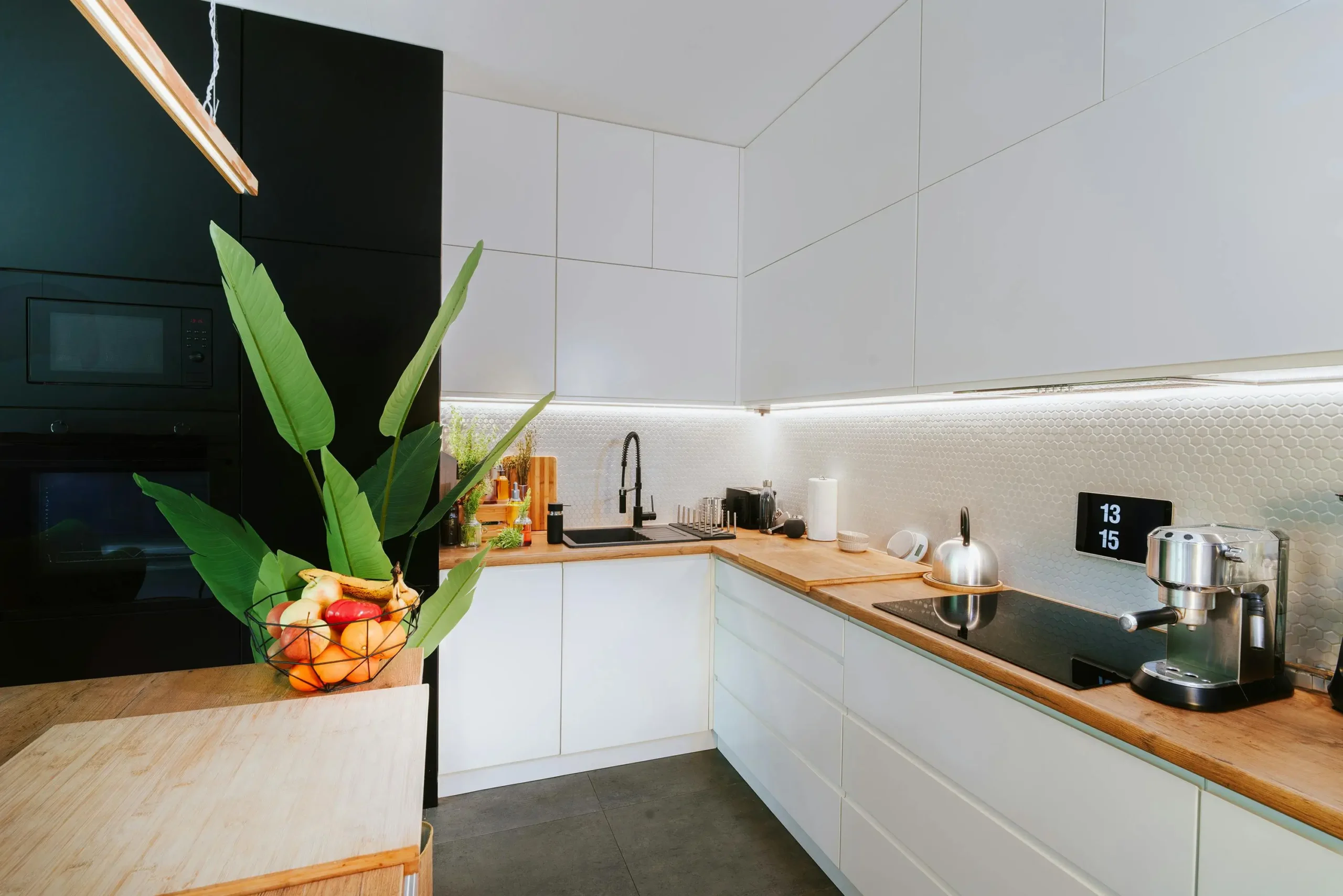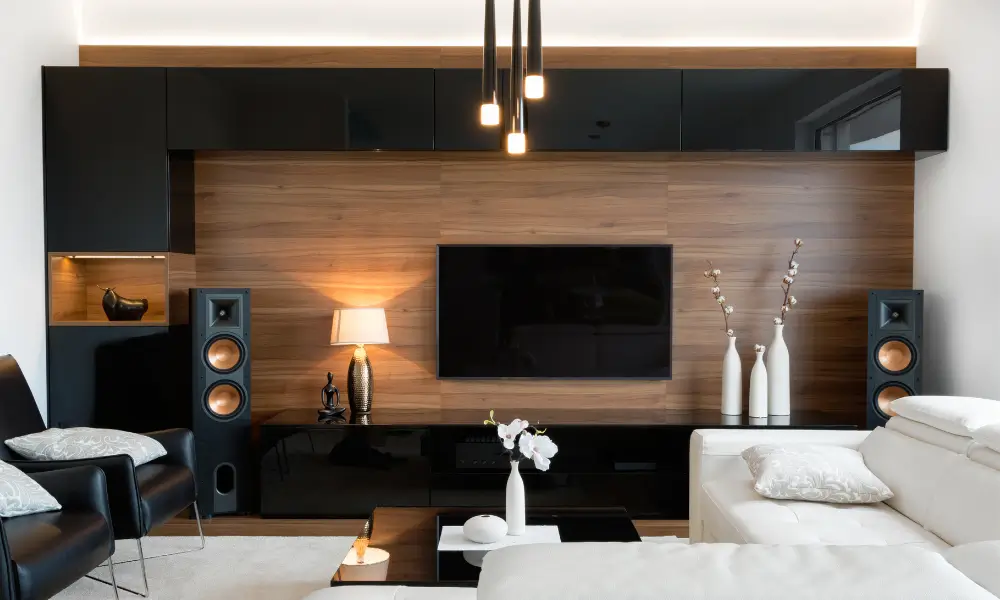
Did you know that over 60% of people look for automation solutions to simplify their home routine?
But what if the goal is to have a smart home without giving up the clean, functional aesthetic of minimalism?
Yes, it’s possible to blend technology and simplicity harmoniously.
In this article, you’ll discover how to automate your home without losing the essence of minimalism, with practical, aesthetic, and accessible tips to transform every room into a connected, organized, and purposeful space—no excess, just the essentials.
What Is Minimalist Home Automation?
Automating your home doesn’t mean filling it with screens, wires, and commands. In minimalism, every choice has a purpose—including technological ones.
Minimalist home automation goes far beyond convenience: it’s a way to optimize the home, eliminating repetitive tasks, improving comfort, and reducing visual and functional excess.
Automation Isn’t Just Convenience—It’s Purpose
In the minimalist context, technology needs to serve the essential.
This means automating processes that truly add value to the routine: turning on lights with presence sensors, keeping the temperature always pleasant, or turning everything off with a single command when leaving home.
The goal is to free up time and attention—not add complexity.
Common Smart Home vs. Minimalist Smart Home
While a traditional smart home might be filled with gadgets, screens, and redundant commands, the minimalist approach is selective:
- Fewer devices, more integration
- Clean design aligned with the decor
- Discreet functionality: technology present, but not visible
Minimalist automation seeks the same efficiency, but gently, avoiding turning the home into a “control panel” with flashing lights and constant sounds.
Technology That Simplifies—Not Complicates
Well-chosen devices bring lightness to the routine, not more obligations.
A classic example is automated routines: one click (or voice command) activates a sequence of useful actions, like turning on lights, adjusting the temperature, and starting a relaxing playlist.

How to Automate Your Home with Ease
Map Your Routine: What Really Needs Automation?
Before investing in technology, observe:
- Do you forget lights on?
- Do you like arriving home to the ideal temperature?
- Do you want to optimize environments for relaxing, working, or sleeping?
These small pain points are great starting points for conscious automation.
Avoid Excess: Start with the Essentials
Three smart choices to start:
- Smart bulbs with intensity and color control
- Smart plugs that turn off devices in standby
- Motion sensors in passageways
Start small and expand only if truly necessary.
Prefer Integrated Solutions Over Multiple Apps
Nothing is further from minimalism than 10 different apps to control devices.
Prefer integrated hubs, such as:
- Google Home
- Amazon Alexa
- Apple HomeKit
They ensure practicality and avoid digital clutter.
Also check out: 10 Smart Devices Perfect for a Minimalist Style
Smart Devices That Blend with Minimalist Environments
Clean Aesthetics, Discreet Functionality
When choosing your gadgets:
- Prefer neutral colors like white, beige, and gray
- Choose minimalist designs without flashing lights
- Opt for compact and smooth shapes
This way, technology integrates into the environment without drawing attention.
Multifunctionality as an Ally of ‘Less is More’
A single device can replace several, reducing excess:
- Smart speakers that control lights and temperature
- Smart plugs with energy monitoring
- Smart LED lamps with integrated Wi-Fi
Suggestions by Room
- Living room: speakers integrated with the light system
- Bedroom: dimmable bulbs with nighttime routines
- Kitchen: smart plugs for small appliances
- Bathroom: presence sensors and built-in lighting

Tips to Hide Technology and Avoid Visual Clutter
Solutions to Hide Wires, Routers, and Hubs
The main villains of minimalist design are:
- Hanging wires
- Routers with flashing LEDs
- Visible devices in prominent places
Practical solutions include:
- Adhesive raceways that follow baseboards
- Built-in niches with perforated doors to hide and ventilate
- Organizer boxes to group and conceal cables
Bet on Niches, Panels, and Custom Furniture
Custom furniture helps camouflage hubs and devices:
- TV panels with internal space for devices
- Cabinets with internal shelves hiding routers
- High shelves with discreet sliding doors
Total Control via Smartphone and Voice Assistants
By centralizing commands on your smartphone or through voice assistants like Alexa or Google Assistant, you eliminate the need for scattered physical controls.

Automated Routines That Are Truly Worth It
Lights That Adapt to Natural Light
Programming lights to vary according to external light brings benefits such as:
- Energy savings
- More visual comfort
- Appropriate atmosphere for relaxation or productivity
Practical example: warm, soft light at dusk helps the body slow down.
Automatic Curtains and Temperature Adjustment
Imagine waking up with natural light filling the room or arriving home to the ideal temperature.
These automations increase:
- Comfort
- Well-being
- Energy efficiency
Custom Modes: Reading, Focus, Relaxation
You can configure routines like:
- Reading mode: neutral white light, silence
- Relax mode: amber light, ambient music
- Focus mode: intense cool light, white noise
Everything can be activated by app, voice command, or sensors.
How to Maintain Control and Avoid Technology Overload
Alerts and Notifications: Filter the Essentials
Avoid information overload:
- Disable unnecessary notifications
- Configure only important alerts (security, energy)
Fewer notifications = more tranquility.
Handle Maintenance to Avoid Mental Overload
Create a quarterly checklist to review:
- Firmware updates
- Wi-Fi connections
- Efficiency of programmed routines
This way, you keep the system fluid and reliable.
Digital Minimalism Also Applies to the Smart Home
Practice digital minimalism:
- Reduce the number of apps
- Centralize everything in a single system
- Create automations that require minimal human interaction
Comparison Table: Conventional vs. Minimalist Home Automation
When automating your home, the goal shouldn’t be to add complexity, but to create functionality and well-being.
| Aspect | Conventional Automation | Minimalist Automation |
|---|---|---|
| Number of devices | Many gadgets per room | Only the essentials |
| Aesthetics | Visible devices and cables | Clean design, discreet technology |
| Integration | Several separate apps | Centralized control via single hub |
| Routines | Complex, with many commands | Simple, focused on comfort and practicality |
| Atmosphere | Cluttered environment | Fluid, organized, and welcoming home |
As you can see, minimalist automation transforms the living experience, bringing more calm and simplicity.
Conclusion
Automating your home consciously is a powerful step towards transforming your routine and environment.
Minimalist automation allows technology to be invisible yet deeply present, bringing more comfort, lightness, and organization.
It’s not about having every possible gadget, but about choosing wisely—automating the essential to live with more purpose.
📌 What about you? Have you started applying smart automations in your home? Share your experience in the comments or send this article to inspire more people!
